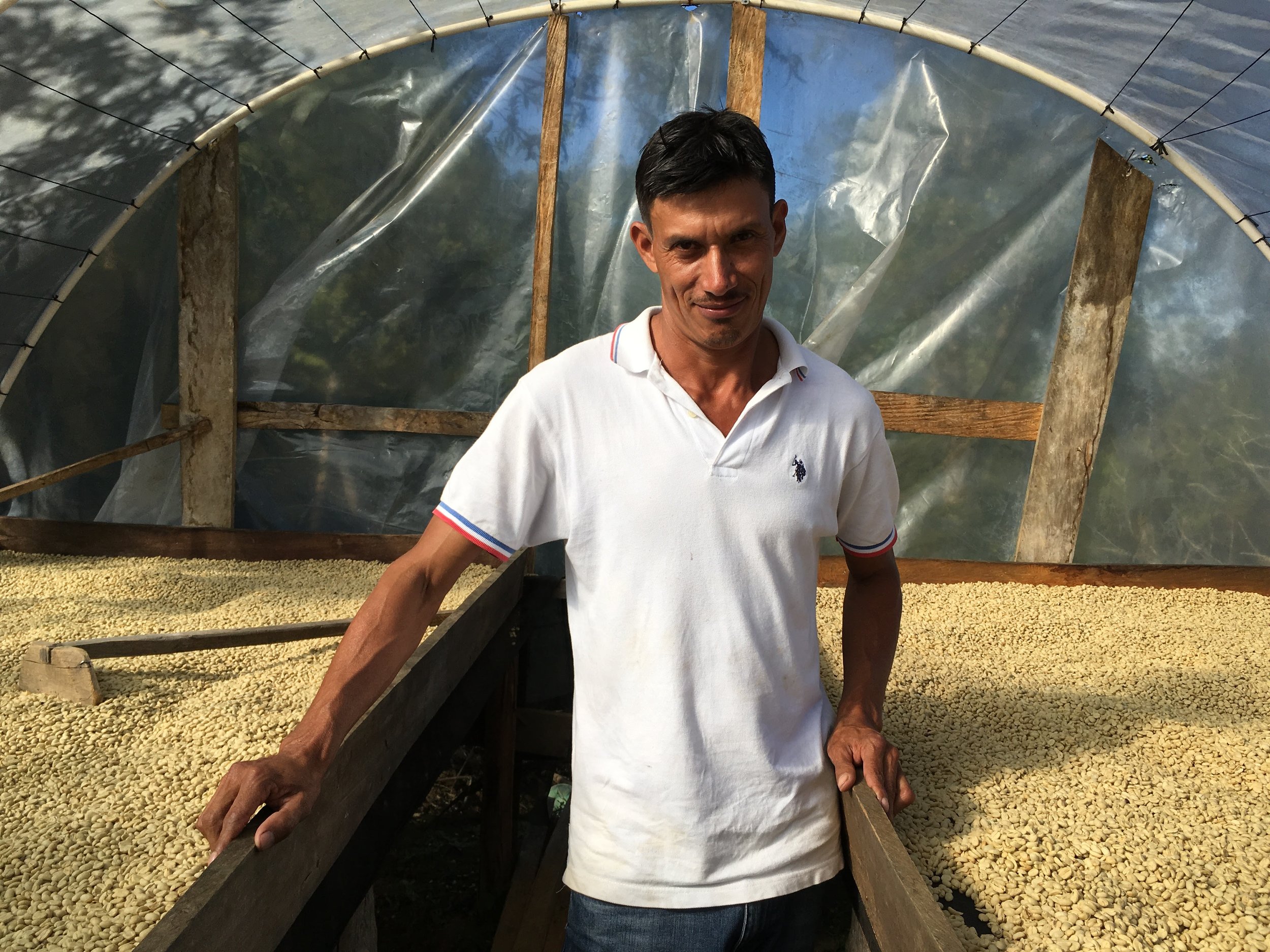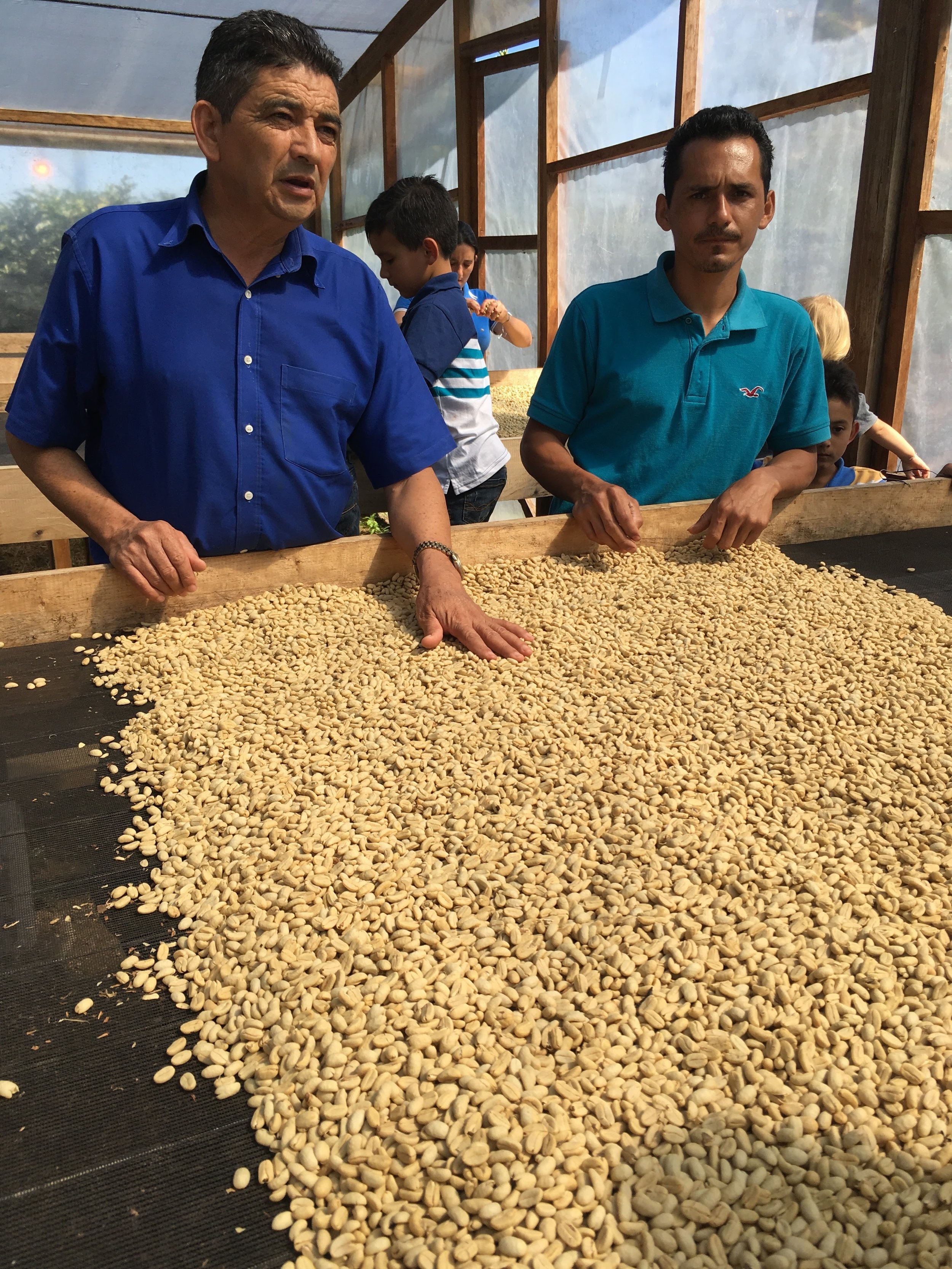Neptaly Bautista: an early CCS partner in Santa Barbara
Field Reports from early and late harvest visits
This is an intro and a comment to what CCS is doing in Santa Barbara. As we are celebrating our 12th+ year of working in this region we are assessing some experiences and looking ahead; at how we want work here going forward.
CCS is making such a direct impact in this community like nowhere else I can think of. Our position is strong, which comes with great responsibility. One that I do not take lightly. It is really humbling. Our deeds are seen and our words are heard. Any temptation to give suggestions to a farmer-friend must be well thought through before it is said, or else, before you know it, what you said will be done.
These partnerships have fortunately been mutually beneficial. Yields have never been higher and the quality has never been better. That is of course not to our credit and is thanks to hard work from the people that live and breathe in Santa Barbara.
There is no mistake: Buying is Power. It has always been like that in this business and continues to be the case. CCS’ buying-power is evident in Santa Barbara, which is important for the things we want to achieve with San Vicente. This is a fact that we are well aware of and is something that needs to be protected, nourished, cherished and held on to.
In the years that have passed since the beginning of our focused sourcing and concrete buying from the region began, CCS is now committing to 20 times our original volume. When looking ahead we should prepare ourselves, collaborate with our farming partners (including our exporter San Vicente), and communicate with the marketplace that we will double the current volume within the next few years; a growth that is inevitable and has been almost organic.
The Moreno family: one of CCS' strongest partnerships anywhere
How This All Began
It started with buying just a few bags from Natividad Benitez, the first-place winner of Cup of Excellence in 2005. It sparked a relationship between Natividad and MOCCA in Oslo (later MOCCA’s roasting operation became a separate roasting company: KAFFA) yet instead we found ourselves growing into relationships with some of his neighbors over the course of the next couple of years. From these humble beginnings, today we find ourselves working with 40 families — and counting — through Collaborative Coffee Source.
Santa Barbara is one of those regions that was clearly discovered and defined by the CoE program. Arturo Angel Paz of San Vicente Coffee Exporters, is a dedicated and curious coffee cupper. He met Miguel Moreno of El Cedral, an ambitious and anxious producer (he was in huge debt at the time just before the competition) when Miguel dropped off one of his samples. From this moment, these two men have been instrumental in changing the Honduran coffee scene forever: Santa Barbara has clearly developed into an appellation. Ironically today, coffee cherries from Marcala (formerly recognized as the important coffee region in Honduras) are bought to be dried in Santa Barbara.
Like so many places we are visiting and buying from, the coffee supply chain and trade has clearly separated into two tracks: commercial or specialty, which not only defines level of ambition and empowerment, but livelihood and thus, level of poverty, to be clear. The dream of most farmers in the know is to find ‘a buyer’ — un comprador — one to grow with. Coffee farming is incredibly labor intensive and the only way to make a living when one has a small farm is to work the land yourself and engaging other family members. Only when the land is larger, just like in any economy, really, can one afford the overhead cost of management.
Having pickers/workers/employees, even in countries where the cost of labor is already unsustainably low (for the worker) when paid at its minimum level, is still the main cost for making coffee. It is also the cost that farmers really experience to be their main economic challenge.
The current price of coffee, even when at levels paid for specialty coffee these days, is dependent on keeping people in poverty, or at least paying them as little as possible for a job that is not only hard and uncomfortable — but totally necessary.
So when we speak about ‘equitable’ and ‘sustainable’ business for the people, we mean everyone involved.
Pedro Sagastume (L) and his son-in-law, Edwin Pineda (R). Gen II relationships in SB
Paying up
Having responsibility suggests that one act responsibly. Our sense of ‘duty’ in these Santa Barbara communities is firm. I strongly believe that the only way to talk about the issues of ‘livelihood’ and ‘poverty’ is to acknowledge the fact that money matters — for all parties involved — and now is the time to bring it up with our suppliers in a way that is also making them feel the responsibility that they have as employers of coffee workers, many times from their own community and sometimes their neighbors.
There can be a subtle nuance between suggesting and requiring something. As much as there may be a desire to change things for what we think is better, we walk a fine line in trying not to impose our mindset. Exposing ignorance is one thing. Worse is being seen as disrespecting cultural differences and inter-relational dynamics in the communities that we - after all - visit only for a few days each year. We have to acknowledge that we don’t live our farming partners’ lives.
Still, this is the new paradigm we are working toward: This harvest/buying season we are increasing the FOB price to $4.25/4.50 per pound (hence Farm Gate pricing is increasing proportionally) as the BASE price for an 86-points lot, we are at the same time ‘asking’ that the farmers also the pay their workers: farm-workers, pickers, etc., more. It is not a condition, but this increase of 50 cts/lb from last season is meant to give the farmer/land owner/owner of the facilities/business person/ employer an opportunity to distribute some of the gains they are making in relationship with us, to their workers.
As for the farms themselves: the stories, challenges and qualities from this harvest, we’ll share these over the next few weeks as we receive the lots and distribute them to their homes all over the world. Due to the prolonged harvest season, which started in January and went all the way to June, we have visited the region more often this year and have thus selected lots from the mid-harvest point (March), which has now just landed. The lots selected from the later harvest point (June) will soon be afloat.
Follow here and our social media for more on the specific farm updates that we will present in the coming days and weeks.
Coming up in the next season, we will work closely with a team of people on the ground to improve quality even further and in all aspects of making great coffee: husbandry, picking, processing, drying and packaging.
See you soon at a cupping table near you!
- Robert W




